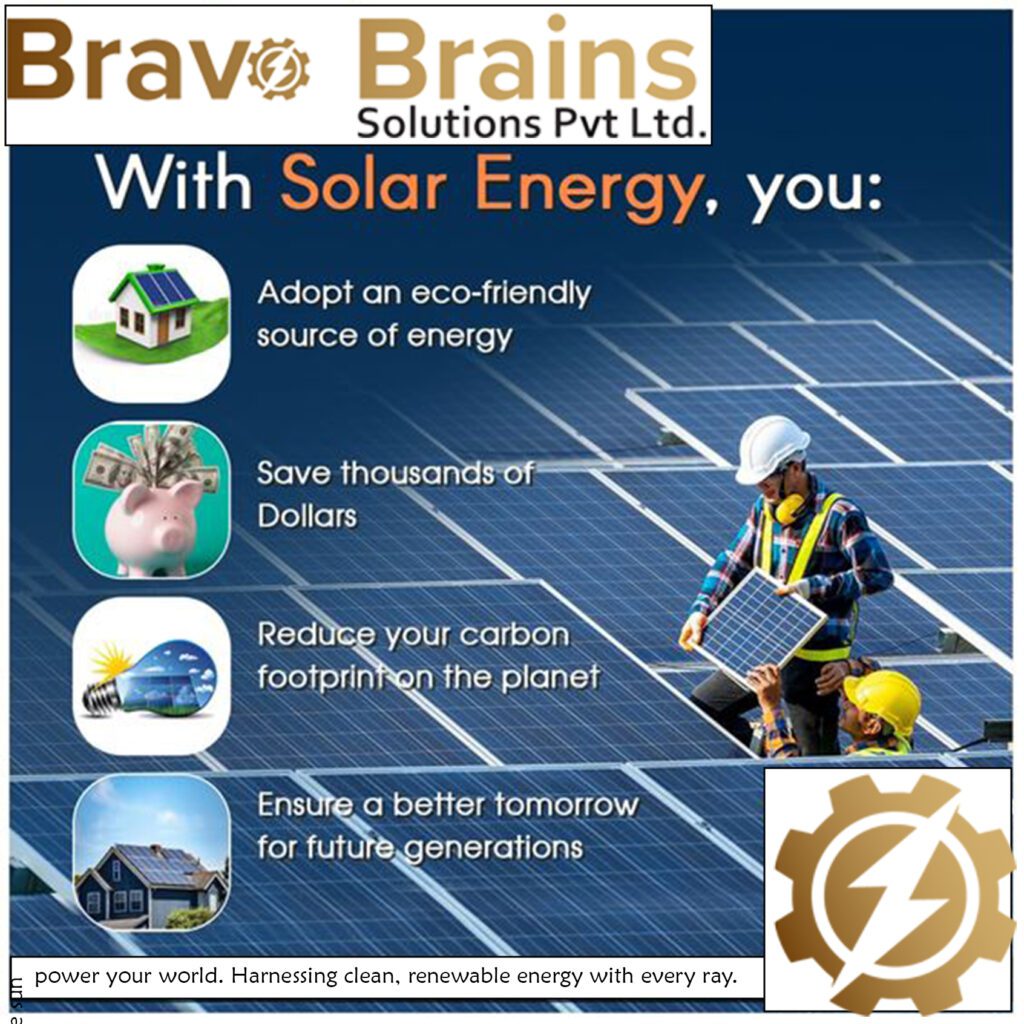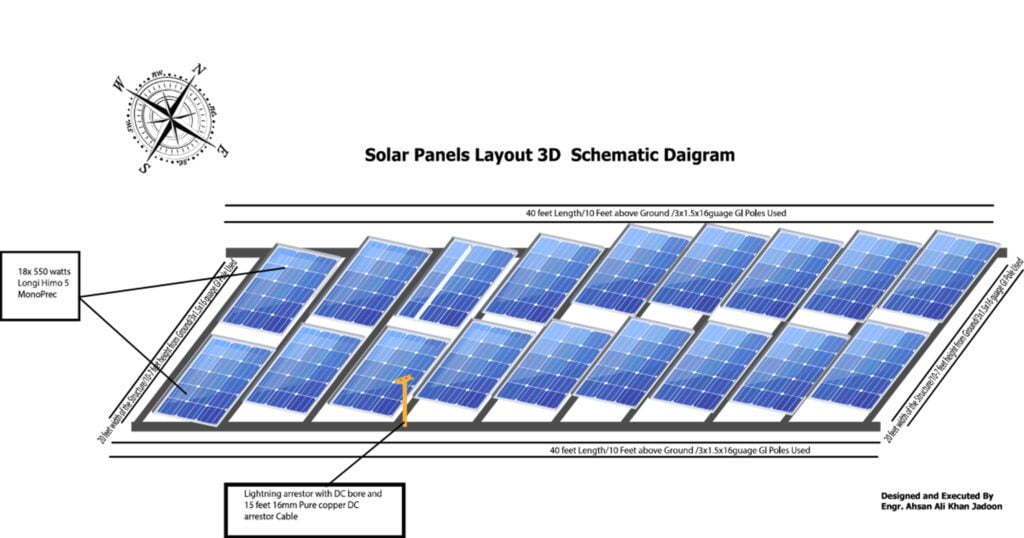An Introduction to Solar Panel Diagrams and Their Hidden Meanings
How do those sleek black rectangles that line rooftops silently convert sunlight into electricity that lights our homes? Have you ever looked up and pondered about it? Do you not think it’s magical? Rest assured, daring explorer, the magic behind solar panels is not magic at all, but rather brilliant science! In this exciting new adventure, we will learn to read solar panel diagrams or schematics and turn them into an easy-to-understand guide to this incredible technology.

Put yourself in the shoes of a small explorer who ventures into the solar panel’s core. Sunlight casting its rays upon the display triggers an enthralling energy ballet. Photons, tiny packets of energy, are what make up this entering light, which is more than just heat. As our daring explorer continues to probe the panel, he or she will eventually come upon the semiconductor layer, the panel’s prized possession.
These semiconductors, which are mainly silicon, are the true heroes of the plot. When photons hit silicon, the electrons within the material experience a real electric shock! These energised electrons are like the hardworking citizens of our tiny planet, raring to get to work with their fresh supply of energy.
A Guide to Solar Energy
Imagine a world where your home transforms sunlight into the electricity that powers your life. No more relying on ever-dwindling fossil fuels, no more hefty energy bills. Solar energy offers this exciting possibility, harnessing the sun’s abundant rays and transforming them into clean, usable power.
Picture sleek solar panels discreetly gracing your rooftop. These panels act as tiny power plants, capturing sunlight with photovoltaic cells made from silicon. When sunlight strikes these cells, it triggers a fascinating phenomenon called the photovoltaic effect. Light particles (photons) collide with the silicon atoms, jolting electrons within them to a higher energy state. These excited electrons, like eager workers, then flow through the cell, creating an electric current. By connecting numerous solar cells together in series and parallel within a panel, we accumulate a significant amount of electricity.
This solar-generated electricity can then be used to power your entire home. Imagine flipping on the light switch and knowing the illumination comes straight from the sun! Your appliances would hum to life, powered by clean energy. And the best part? This renewable resource is constantly replenished by the sun, ensuring a sustainable and long-term solution for your energy needs.
But solar energy isn’t just about powering your home. It’s about empowering you. By switching to solar, you’re taking control of your energy independence, reducing reliance on the traditional grid and potentially saving money on those ever-increasing energy bills.
Solar Panels: What They Do
Solar cells, the basic component of solar panels, are where their magic happens. At the core of any energy conversion system are these miniature powerhouses, typically constructed from silicon. Think of a solar cell as a little factory that can convert sunshine into power. Solar cells work by interacting with the atoms of silicon when light hits their surface. An intriguing phenomena known as the photovoltaic effect is produced by this contact.
Allow me to explain: The photons that make up sunshine are incredibly little energy packets. Collisions between photons and silicon atoms cause electrons to be excited to higher energy levels through disruption. Eager to get back to their usual state, these stimulated electrons begin to move through the cell, producing a small electric current. We can power our homes, companies, and even entire communities with the power we generate from a solar panel, which is made up of several solar cells connected in series and parallel.
Solar Cells: A Comprehensive Guide
Materials with a photochemical reaction are the building blocks of solar cells. Capturing and converting the electric current that this reaction creates into useful electricity is the next step. Imagine converting solar energy into electricity for your house!
Understanding How Solar Panels Work
There are a number of parts to a solar panel system, and they all work together to transform sunshine into electricity.
- Inverter: This apparatus transforms the DC electricity produced by the solar panels into the AC electricity used by the majority of home appliances.
- Battery Bank: For use at night or on overcast days, some systems incorporate a battery bank to store the extra electricity produced during the day.
- Charge Controller: For safe and effective charging of the batteries, a charge controller is an essential component. It regulates the flow of electricity from the solar panels.
Advantages of Solar Power
There are several advantages to using solar energy, such as:

- Effect on the Environment: Solar power helps fight climate change because it is renewable and clean.
Installing solar panels may have a significant initial cost, but they pay for themselves in reduced electricity bills over time.
Solar Panels: Frequently Asked Questions - Upkeep: To keep your solar panels in good working order, all that is required is regular cleaning and the occasional inspection.
- Installation: For optimal performance and safety, it is recommended to use a professional to install your solar panels.
Delving into Solar Panel Schematics

Solar panel diagrams can be simple or complex, depending on the situation. A system’s interconnections between solar panels, inverters, and batteries can be better understood with their aid.
Solar Power’s Rewarding Future
Solar panels are getting more cost-effective and efficient with each passing year of technological development. Perovskite solar cells are one example of how new technology is expanding human potential.
Becoming a Part of the Solar Age
A cleaner, brighter future is within reach if you take the time to learn about solar panels and how they operate. There is a wealth of information available to you whether you are interested in learning more about solar panels or are thinking about installing them.
Solar Panel Diagrams Conclusion
After you learn the basics, you’ll understand that solar panel diagrams are really simply a road map to a more environmentally friendly future. The next time you look at those shiny solar panels, keep in mind that they’re actually disguised power plants that are harnessing the sun’s rays to fuel a cleaner, more sustainable future.
FAQ’s
- what are Solar panel diagrams?
A solar panel diagram shows the layout and connections of a solar energy system graphically. It shows how the power is transferred from the solar panels to the inverter and beyond. - How can I create a solar energy system using a diagram of solar panels?
A diagram of solar panels is a tool for constructing a solar energy system. It clarifies the precise placement and connection of each part to guarantee the system works as intended. - Five, are there several kinds of solar panel schematics?
Solar panel diagrams can vary in style according to the specifics of the solar energy system in question. There are various types of system configuration diagrams, such as grid-tied, off-grid, and hybrid diagrams. - What are the main elements of a solar panel diagram?
Solar panels, inverters, batteries (if relevant), charge controllers, and electrical wiring are the main elements of a solar panel diagram. The solar energy system would not work without each individual part. - What does a solar panel diagram mean?
Learn the parts of a solar panel and how they work before attempting to decipher the diagram. After that, you may observe the system’s operation by tracking the electricity’s path from the solar panels to the inverter and beyond.
Solar energy installation manuals, manufacturers of solar energy systems, and the internet are good places to look for examples of solar panel diagrams. A solar energy system’s architecture can be better understood with the use of these diagrams. - Is it possible to modify a solar panel layout to suit my requirements?
It is possible to tailor a solar panel layout to your individual energy demands and system specifications. You can get a personalized plan for your house or company from an expert solar energy installer.